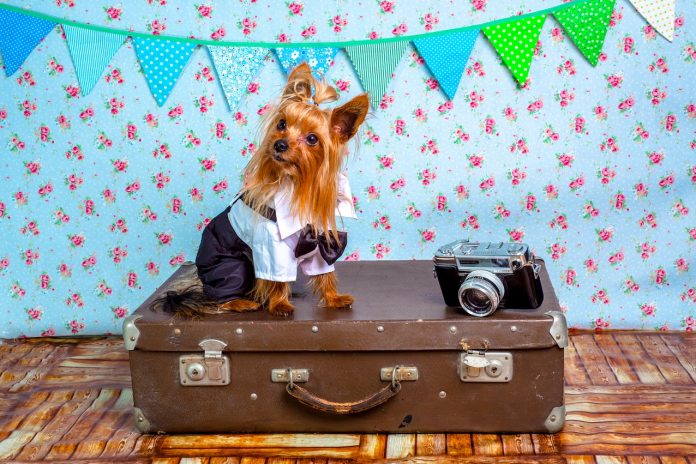
Many of us approach flying with our pets with a great deal of fear and trepidation. People with allergies might complain and pets might misbehave. Some airlines have elected to no longer accept pets; most airlines have blackout periods around holidays. The airline industry and international import/export laws are constantly changing rules and regulations. If you intend on flying with your pet, do your research and have a backup plan is, never assume the same rules apply this week as last week.
Small pets traveling as hand luggage can check in with you through security. You carry them through the scanner, while the cage is screened on the belt. I have been able to reserve premium seats at the front of the plane with my dog, but I was warned if anyone complained I would be consigned to the back rows of the plane. I have also encountered problems flying with a large dog in a crate that didn’t fit through the baggage door of a smaller plane. Always know the dimensions of your cage and total weight of the pet and cage when booking a flight.
Animals flying as cargo alone tend to be much more difficult to coordinate. Pets must be delivered to the airline’s cargo depot hours prior to flight time. Cage requirements are strict. Pets must be able to stand fully upright within the cage. Two bowls for food and water must accompany the pet. Food requirements depend on the length of the flight. You can teach your dog to use one of the closed water bottles to avoid spillage in the cage. A leash must be attached to the cage. The cage must be clearly marked and the doors secure. Make sure your pet is adequately identified. Tattoo, microchip, and a collar with identification identify my pets. I’ll take no chances.
Try to only book your pet on a direct flight or keep to the same carrier. There are pet travel brokers who will take care of all the hassle if you fly your pet around the globe. If you’re taking a pet to Australia, New Zealand, or the British Isles, complicated and extensive vaccination protocols, blood tests, deworming protocols, and documentation make a broker absolutely necessary. Preparations take several months and schedules are engraved in stone. Errors in paperwork to Australia can cost thousands with your pet consigned to quarantine.
A current rabies certificate is required to travel with a dog into the U.S.A., but airlines may require a recent health certificate. Dogs under twelve weeks of age are too young to have a rabies vaccine and cannot enter the United States although exceptions can be applied for. Cats don’t require a rabies certificate to enter the United States but most states do require it, and they do require rabies vaccination to return to Canada.
Avoid sedating your pet when flying. Only sedate your pet if you fear his panic could result in injury. A non-sedated pet may be scared, but he is better able to control his body’s temperature, and less likely to aspirate vomit if air sick.
If you arrive at the airport and the outdoor temperature at your destination or current location are too extreme for your pet’s safety on the tarmac, the airline may refuse to accept your pet. Have an alternative plan and be flexible. Most major cities including Calgary have kennels that will pick up and deliver pets to flights.
As a professional worrier, I still find flying my furry children extremely stressful but adequate preparation has allowed me to have many wonderfully uneventful journeys.








